Impact of Flax and Basalt Fibre Reinforcement on Selected Properties of Geopolymer Composites
Abstract
1. Introduction
2. Materials and Methods
2.1. Materials
2.2. Methods
2.2.1. Mechanical Properties
2.2.2. Thermogravimetric Analysis (TGA), Differential Scanning Calorimetry (DSC) and Fourier Transform Infrared Spectroscopy (FTIR) Analysis
2.2.3. Scanning Electron Microscopy
2.2.4. Statistical Data Processing
3. Results and Discussion
3.1. Characteristics of the Used Fibres
3.2. Impact of the Addition of Fibres on the Mechanical Properties of the Composite
3.3. Characteristics of Joint Failure
3.4. TGA, DSC and FTIR Analysis
4. Conclusions
Author Contributions
Funding
Acknowledgments
Conflicts of Interest
References
- Defoirdt, N.; Biswas, S.; De Vriese, L.; Van Acker, J.; Ahsan, Q.; Gorbatikh, L.; Van Vuure, A.V.; Verpoest, I. Assessment of the tensile properties of coir, bamboo and jute fibre. Compos. Part A Appl. Sci. Manuf. 2010, 41, 588–595. [Google Scholar] [CrossRef]
- Maity, S.; Gon, D.; Paul, P. A Review of Flax Nonwovens: Manufacturing, Properties, and Applications. J. Nat. Fibers 2014, 11, 365–390. [Google Scholar] [CrossRef]
- Hýsek, Š.; Wimmer, R.; Böhm, M. Optimal processing of flax and hemp fibre nonwovens. BioResources 2016, 11, 8522–8534. [Google Scholar] [CrossRef][Green Version]
- Anajiwala, R.D.; Blouw, S. Composites from bast fibres—Prospects and potential in the changing market environment. J. Nat. Fibers 2007, 4, 91–109. [Google Scholar] [CrossRef]
- Sgriccia, N.; Hawley, M.C.; Misra, M. Characterization of natural fiber surfaces and natural fiber composites. Compos. Part A Appl. Sci. Manuf. 2008, 39, 1632–1637. [Google Scholar] [CrossRef]
- Das, D.; Pradhan, A.K.; Chattopadhyay, R.; Singh, S.N. Composite Nonwovens. Text. Prog. 2012, 44, 1–84. [Google Scholar] [CrossRef]
- Pernica, D.; Reis, P.N.B.; Ferreira, J.A.M.; Louda, P. Effect of test conditions on the bending strength of a geopolymer-reinforced composite. J. Mater. Sci. 2010, 45, 744–749. [Google Scholar] [CrossRef]
- Hýsek, Š.; Frydrych, M.; Herclík, M.; Louda, P.; Fridrichová, L.; Le Van, S.; Le Chi, H. Fire-resistant sandwich-structured composite material based on alternative materials and its physical and mechanical properties. Materials 2019, 12, 1432. [Google Scholar] [CrossRef]
- Singh, B.; Ishwarya, G.; Gupta, M.; Bhattacharyya, S.K. Geopolymer concrete: A review of some recent developments. Constr. Build. Mater. 2015, 85, 78–90. [Google Scholar] [CrossRef]
- Nguyen, T.X.; Louda, P.; Kroisova, D.; Kovacic, V.; Chi, H.L.; Vu, N.L. Effects of Commercial Fibers Reinforced on the Mechanical Properties of Geopolymer Mortar. Chem. Listy 2012, 106, 560–563. [Google Scholar]
- Zheng, Y.Z.; Wang, W.W.; Brigham, J.C. Flexural behaviour of reinforced concrete beams strengthened with a composite reinforcement layer: BFRP grid and ECC. Constr. Build. Mater. 2016, 115, 424–437. [Google Scholar] [CrossRef]
- Le Chi, H.; Louda, P. Experimental Investigation of Four-Point Flexural Behavior of Textile Reinforcement in Geopolymer Mortar. Int. J. Eng. Technol. 2019, 11, 10–15. [Google Scholar] [CrossRef][Green Version]
- Behera, P.; Baheti, V.; Militky, J.; Louda, P. Elevated temperature properties of basalt microfibril filled geopolymer composites. Constr. Build. Mater. 2018, 163, 850–860. [Google Scholar] [CrossRef]
- Cook, J.G. Handbook of Textile Fibres, 5th ed.; Woodhead Pub: Cambridge, UK, 2003. [Google Scholar]
- Timber Structures—Test Methods—Determination of Mechanical Properties of Wood Based Panels; EN 798:2004; Eur. Comm. for Stand: Brussels, Belgium, 2004.
- Testing of Concrete—Determination of Static Modulus of Elasticity in Compression; ISO 1920-10; Eur. Comm. for Stand: Brussels, Belgium, 2016.
- Test Method—Metallic Materials—Charpy Impact Test; EN 10045; Eur. Comm. for Stand: Brussels, Belgium, 1990.
- Yan, L.; Kasal, B.; Huang, L. A review of recent research on the use of cellulosic fibres, their fibre fabric reinforced cementitious, geo-polymer and polymer composites in civil engineering. Compos. Part B Eng. 2016, 92, 94–132. [Google Scholar] [CrossRef]
- Meng, W.; Khayat, K.H. Mechanical properties of ultra-high-performance concrete enhanced with graphite nanoplatelets and carbon nanofibers. Compos. Part B Eng. 2016, 107, 113–122. [Google Scholar] [CrossRef]
- Xu, M.; Bao, Y.; Wu, K.; Shi, H.; Guo, X.; Li, V.C. Multiscale investigation of tensile properties of a TiO2-doped Engineered Cementitious Composite. Constr. Build. Mater. 2019, 209, 485–491. [Google Scholar] [CrossRef]
- Assaedi, H.; Alomayri, T.; Shaikh, F.; Low, I.M. Influence of Nano Silica Particles on Durability of Flax Fabric Reinforced Geopolymer Composites. Materials 2019, 12, 1459. [Google Scholar] [CrossRef]
- Assaedi, H.; Shaikh, F.U.A.; Low, I.M. Effect of nanoclay on durability and mechanical properties of flax fabric reinforced geopolymer composites. J. Asian Ceram. Soc. 2017, 5, 62–70. [Google Scholar] [CrossRef]
- Assaedi, H.; Shaikh, F.U.A.; Low, I.M. Influence of mixing methods of nano silica on the microstructural and mechanical properties of flax fabric reinforced geopolymer composites. Constr. Build. Mater. 2016, 123, 541–552. [Google Scholar] [CrossRef]
- Yan, L.; Chouw, N.; Jayaraman, K. Flax fibre and its composites—A review. Compos. Part B Eng. 2013, 56, 296–317. [Google Scholar] [CrossRef]
- Raj, S.; Kumar, V.R.; Kumar, B.H.B.; Lyer, N.R. Basalt: Structural insight as a construction material. Sādhanā 2017, 42, 75–84. [Google Scholar] [CrossRef]
- Sim, J.; Park, C.; Moon, D.J. Characteristics of basalt fiber as a strengthening material for concrete structures. Compos. Part B Eng. 2005, 36, 504–512. [Google Scholar] [CrossRef]
- Davidovits, J. Geopolymer Chemistry and Applications, 2nd ed.; Institut Geopolymere: Saint-Quentin, France, 2008. [Google Scholar]
- Tran, T.P.T.; Bénézet, J.-C.; Bergeret, A. Rice and Einkorn wheat husks reinforced poly (lactic acid) (PLA) biocomposites: Effects of alkaline and silane surface treatments of husks. Ind. Crop. Prod. 2014, 58, 111–124. [Google Scholar] [CrossRef]
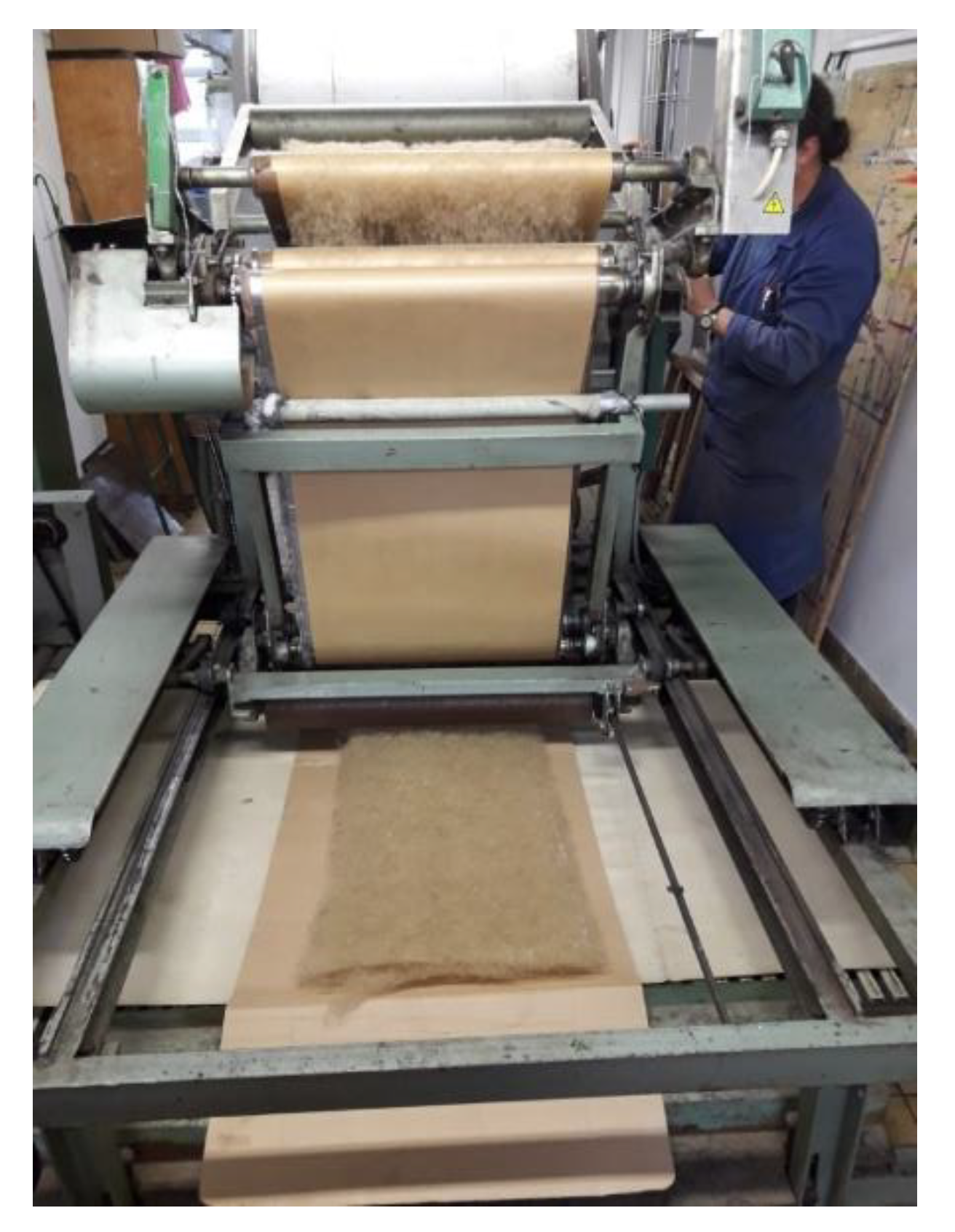
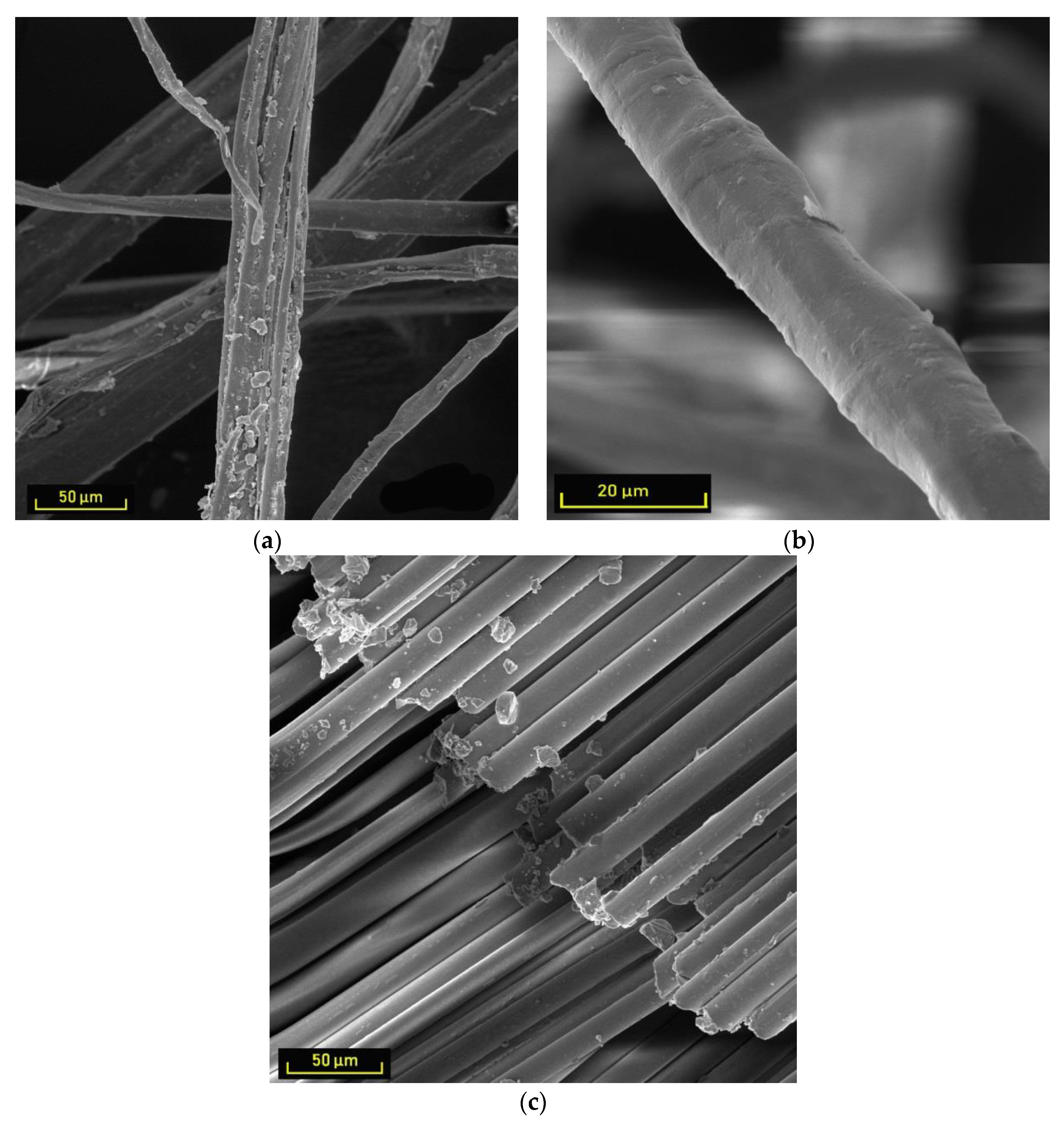
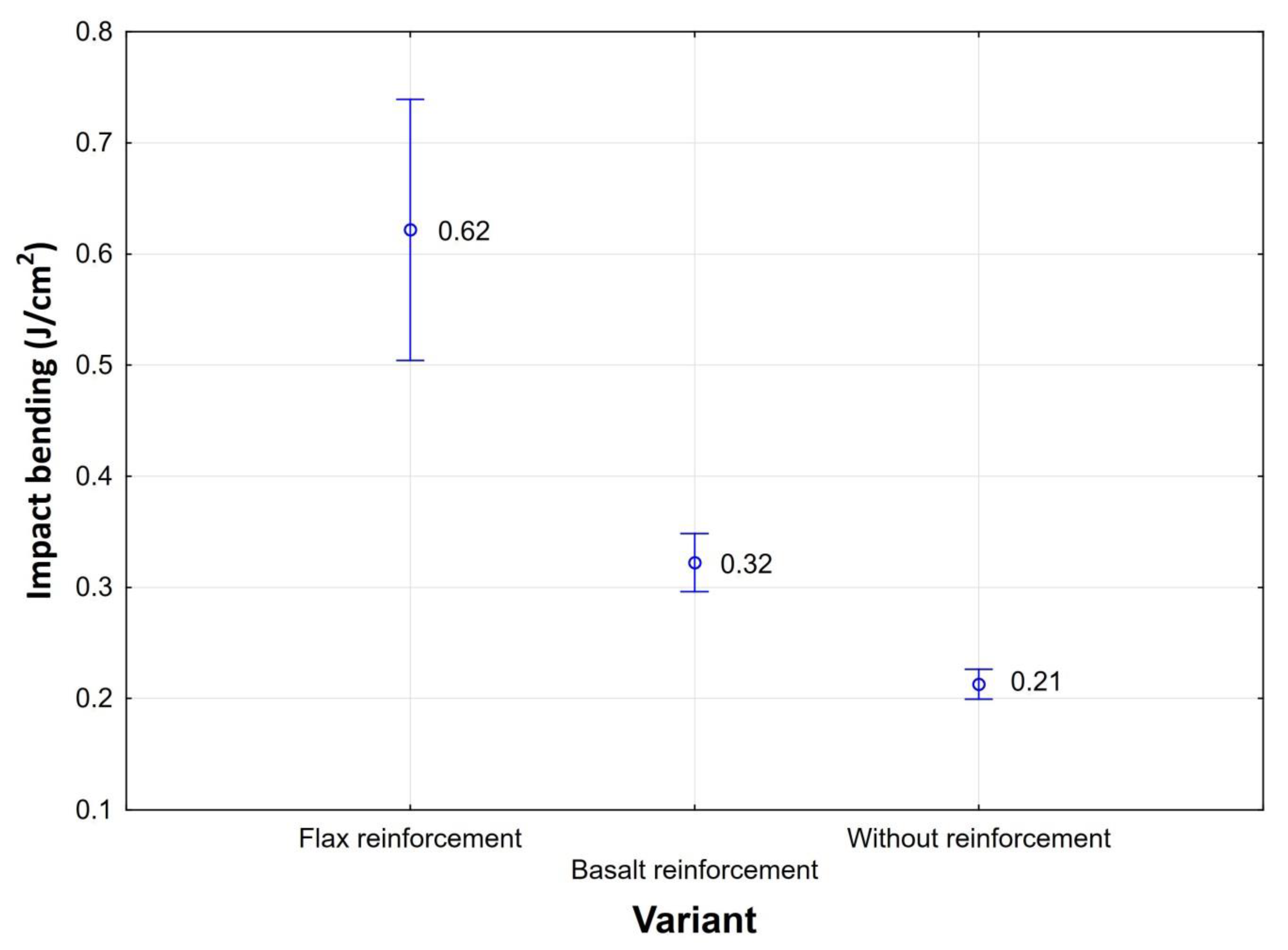

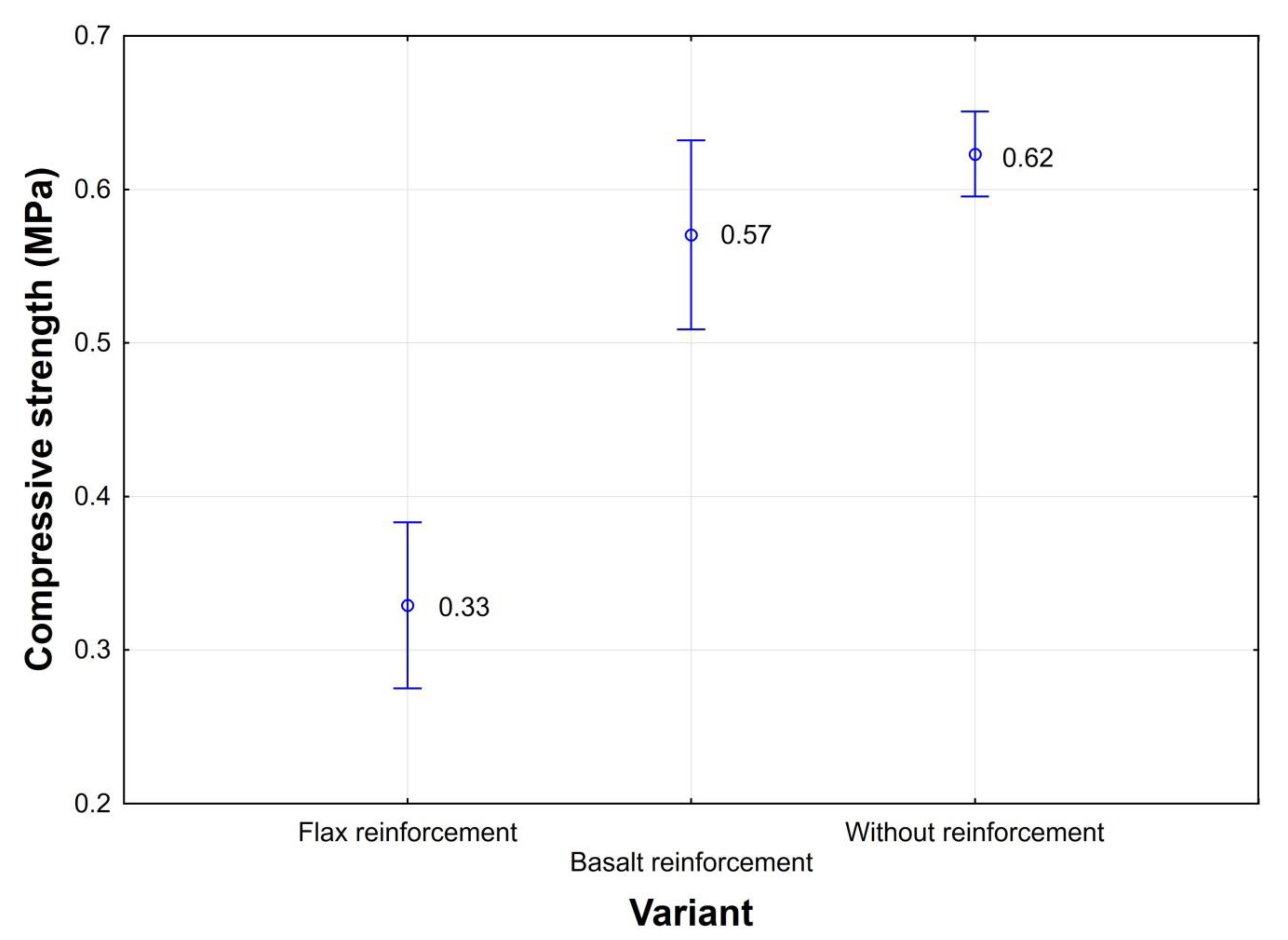
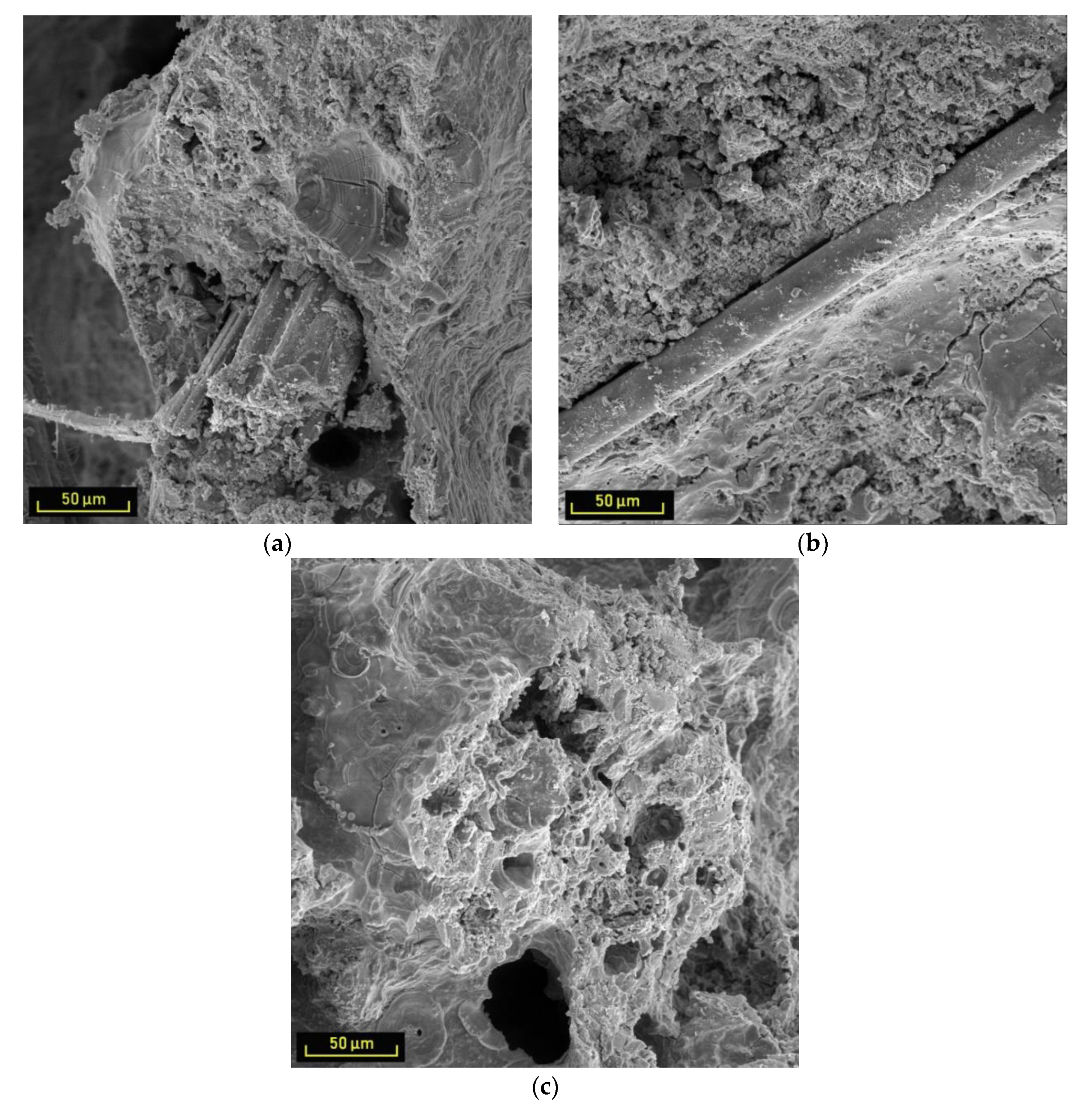

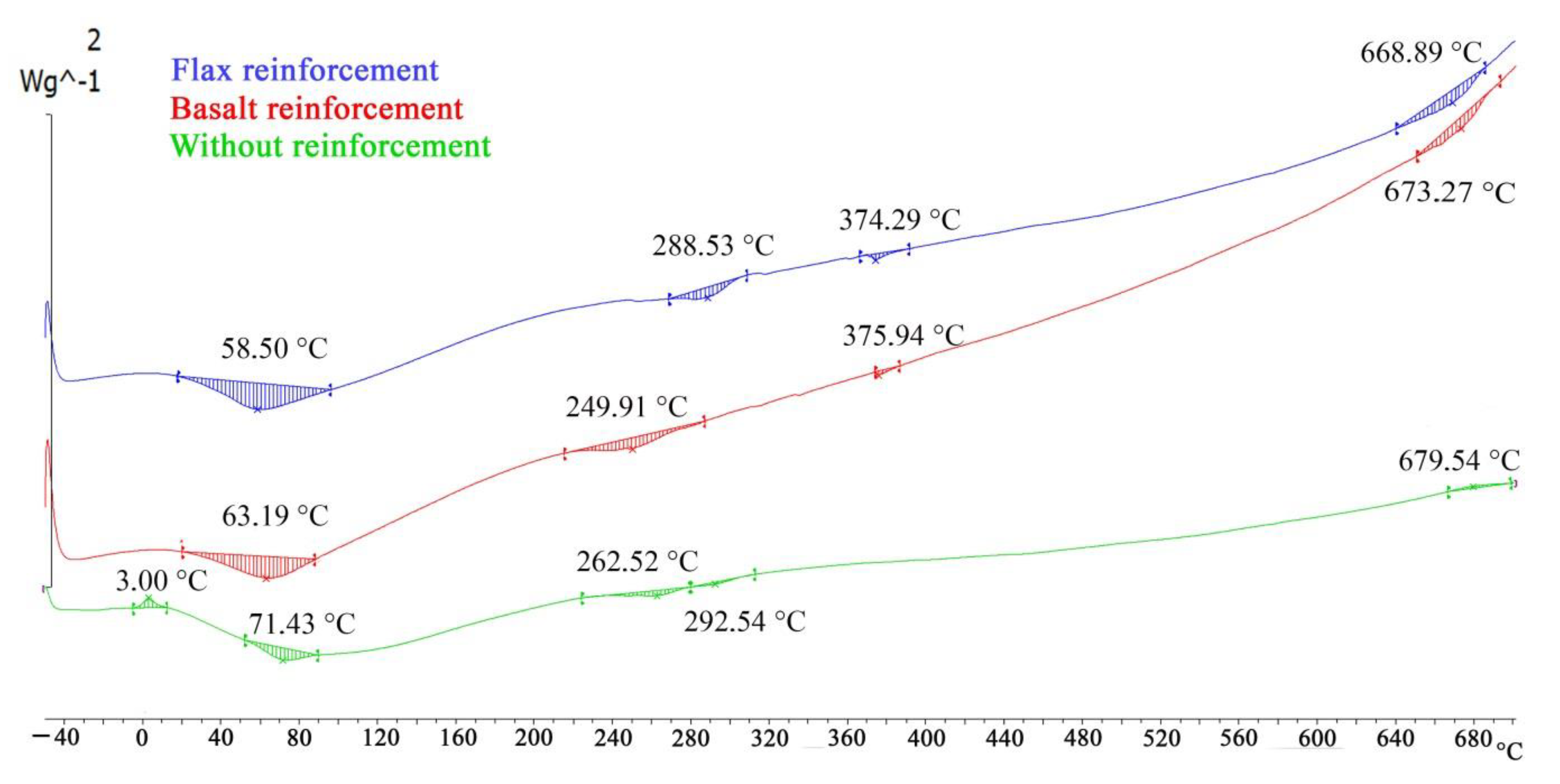
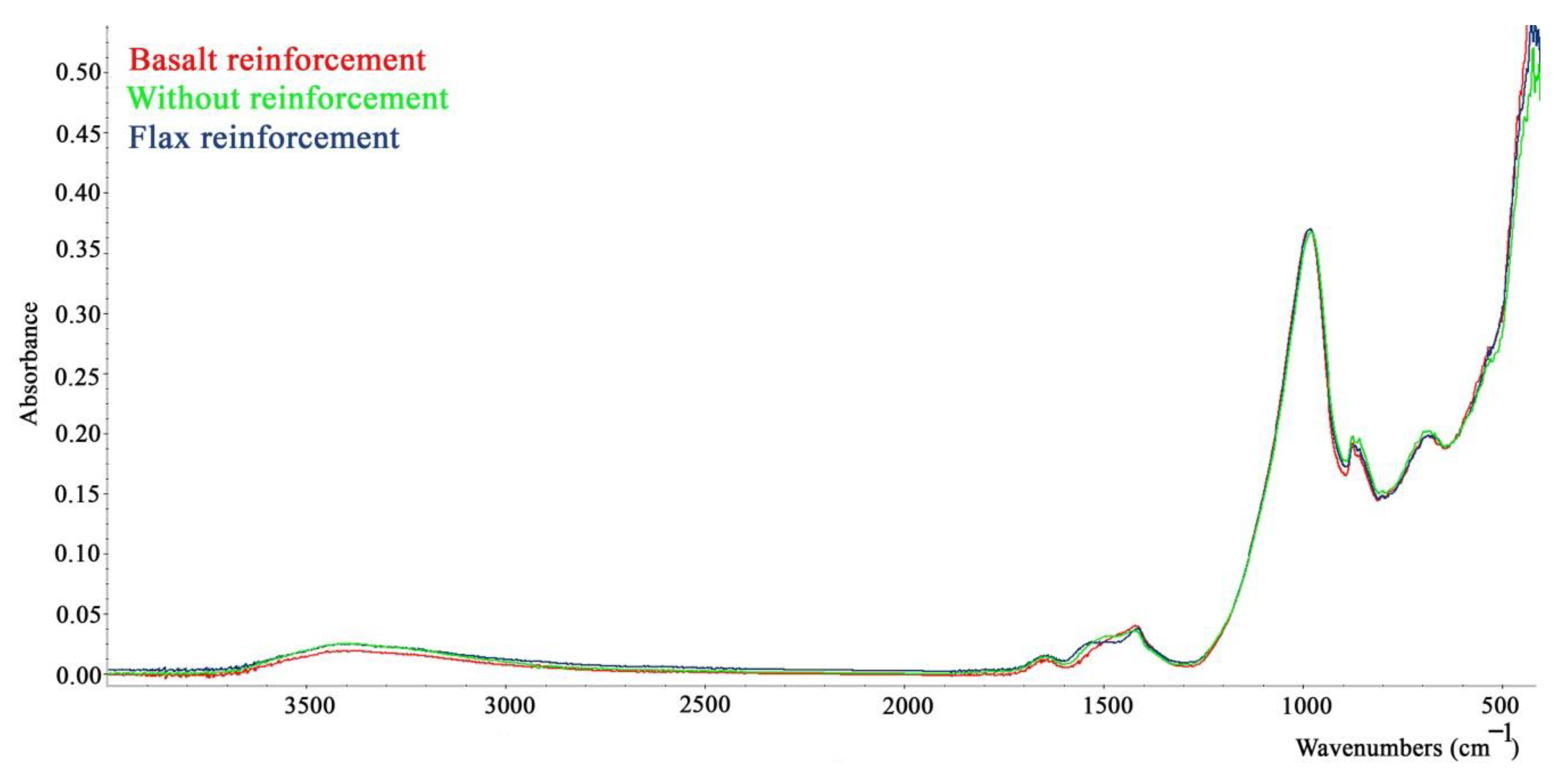
| Component | Percentage of Individual Components |
|---|---|
| Cement Baucis Lk | 50.45% |
| Activator Baucis Lk | 44.90% |
| Fibres (flax or basalt) | 2.16% |
| Aluminium powder | 2.49% |
| No. | Type of Fibres | Density (kg/m3) |
|---|---|---|
| 1 | Flax | 448 (51) |
| 2 | Basalt | 456 (22) |
| 3 | Without reinforcement | 556 (35) |
© 2019 by the authors. Licensee MDPI, Basel, Switzerland. This article is an open access article distributed under the terms and conditions of the Creative Commons Attribution (CC BY) license (http://creativecommons.org/licenses/by/4.0/).
Share and Cite
Frydrych, M.; Hýsek, Š.; Fridrichová, L.; Le Van, S.; Herclík, M.; Pechočiaková, M.; Le Chi, H.; Louda, P. Impact of Flax and Basalt Fibre Reinforcement on Selected Properties of Geopolymer Composites. Sustainability 2020, 12, 118. https://doi.org/10.3390/su12010118
Frydrych M, Hýsek Š, Fridrichová L, Le Van S, Herclík M, Pechočiaková M, Le Chi H, Louda P. Impact of Flax and Basalt Fibre Reinforcement on Selected Properties of Geopolymer Composites. Sustainability. 2020; 12(1):118. https://doi.org/10.3390/su12010118
Chicago/Turabian StyleFrydrych, Miroslav, Štěpán Hýsek, Ludmila Fridrichová, Su Le Van, Miroslav Herclík, Miroslava Pechočiaková, Hiep Le Chi, and Petr Louda. 2020. "Impact of Flax and Basalt Fibre Reinforcement on Selected Properties of Geopolymer Composites" Sustainability 12, no. 1: 118. https://doi.org/10.3390/su12010118
APA StyleFrydrych, M., Hýsek, Š., Fridrichová, L., Le Van, S., Herclík, M., Pechočiaková, M., Le Chi, H., & Louda, P. (2020). Impact of Flax and Basalt Fibre Reinforcement on Selected Properties of Geopolymer Composites. Sustainability, 12(1), 118. https://doi.org/10.3390/su12010118








